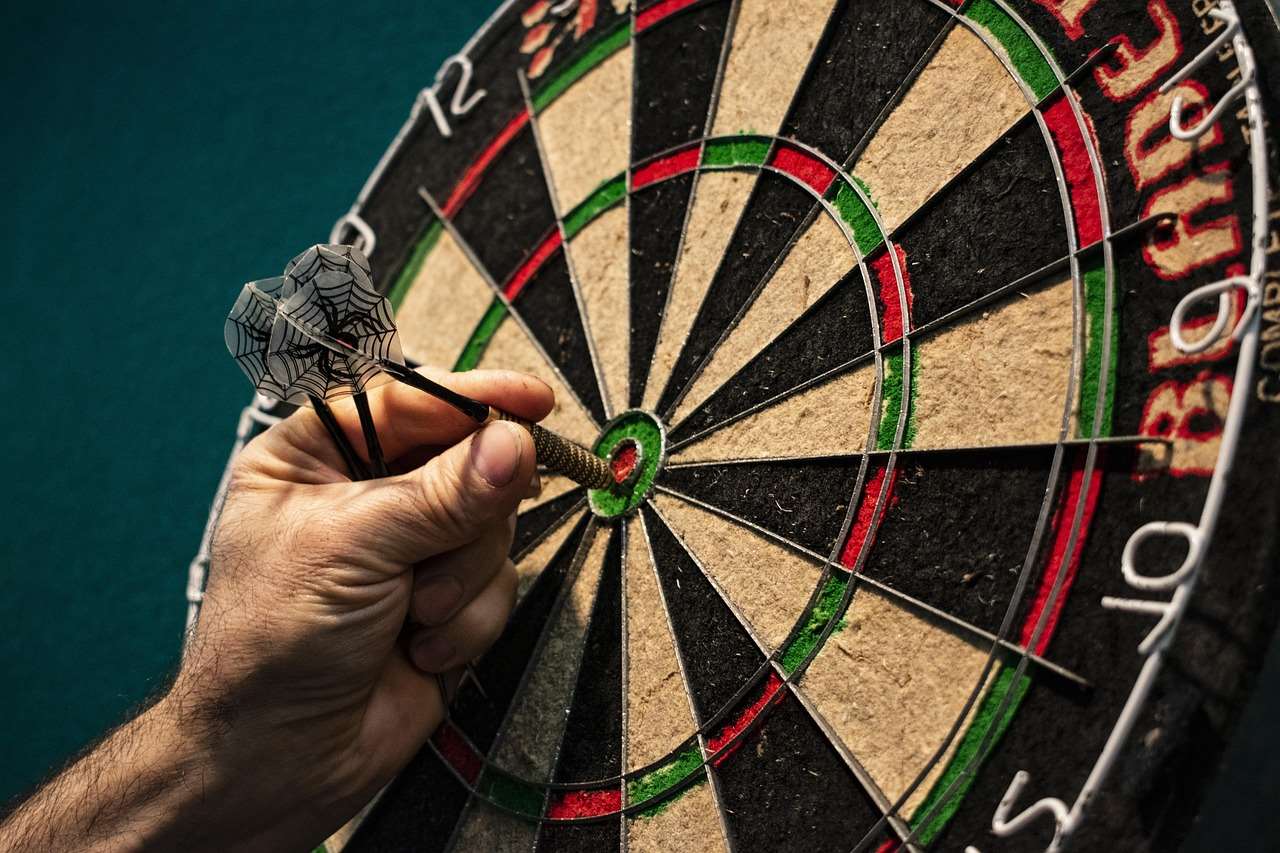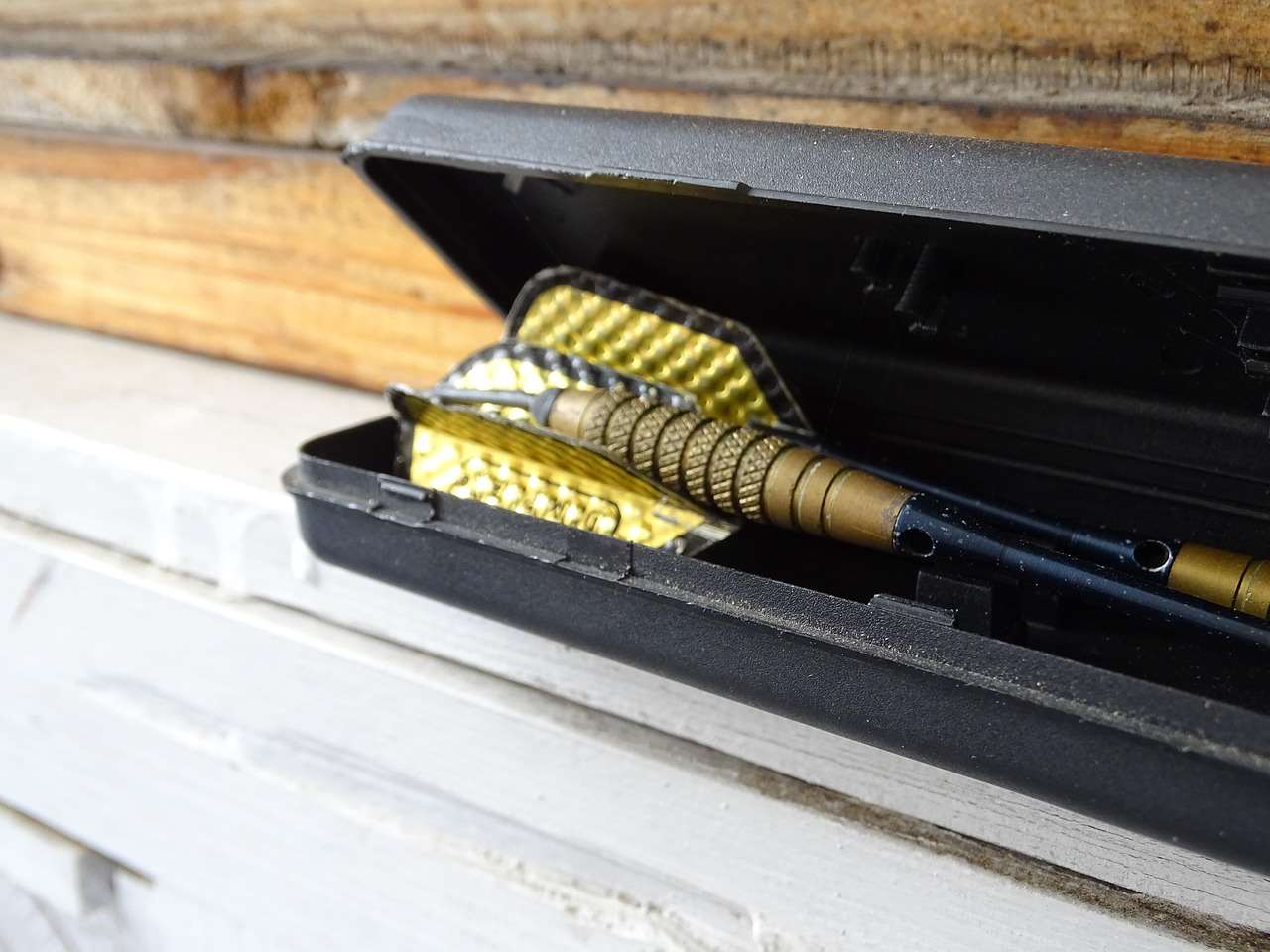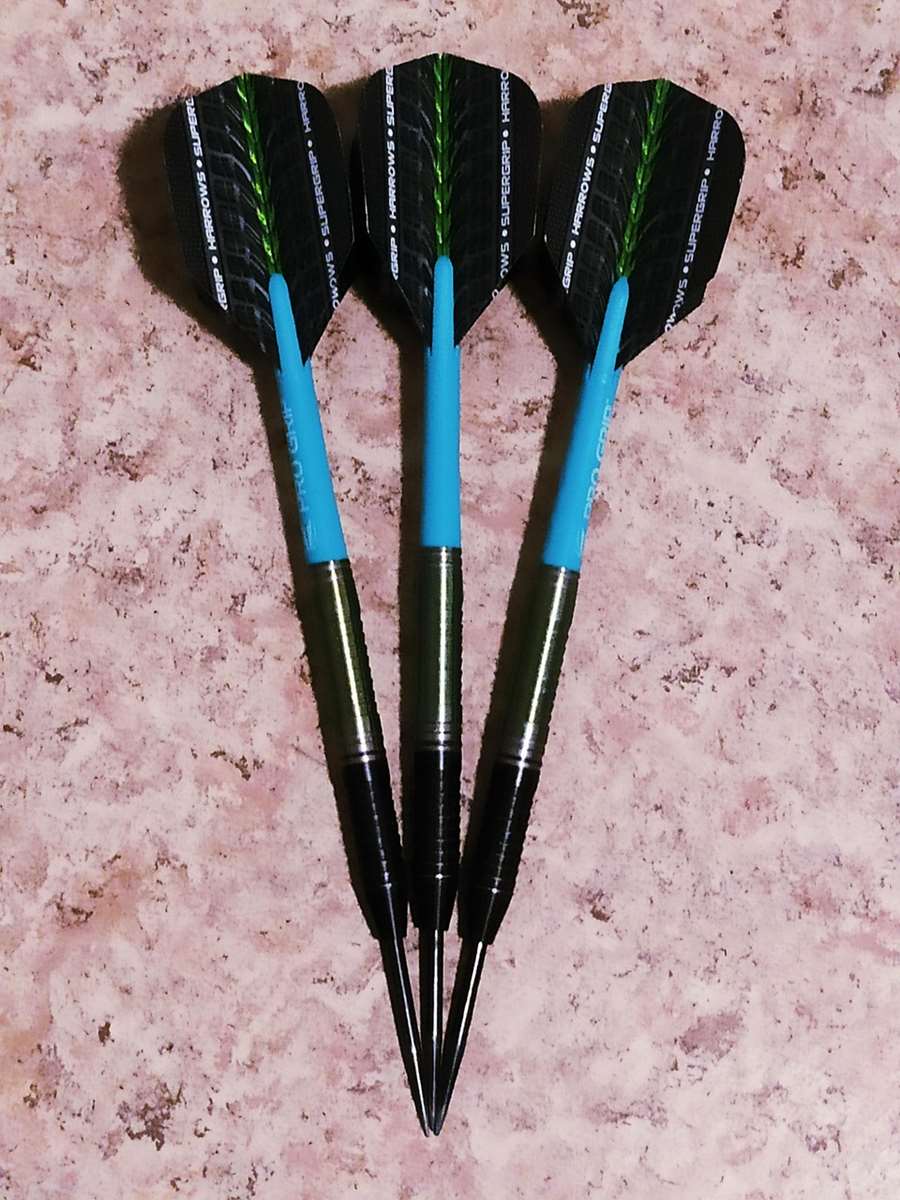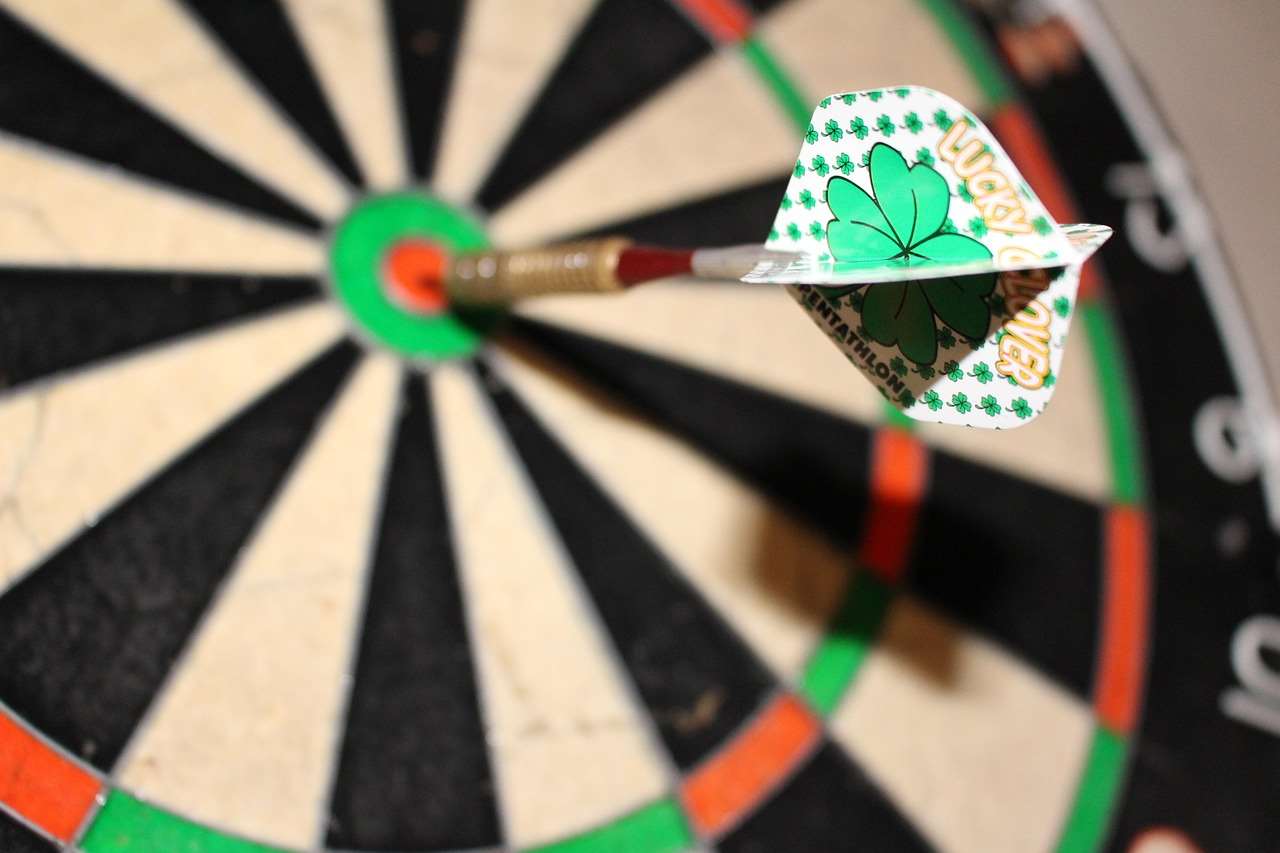Uiteindelijk, balance reigns supreme in darts; while weight contributes to stability, a dart’s balance dictates how smoothly it flies and impacts your accuracy, making Weight vs Balance Importance In Darts a crucial consideration. This article will explore how these two factors interplay and how to optimize both for improved performance on the oche.
⚠️ Still Using Pen & Paper (Of een schoolbord)?! ⚠️
Stap in de toekomst! De Dart Teller -app behandelt alle scoren, stelt kassa voor, en volgt uw statistieken automatisch. It's easier than you think!
Probeer de Smart Dart Teller -app gratis!Klaar voor een upgrade? Klik hierboven!
Understanding Dart Weight and Its Impact
De weight of a dart is often the first specification that catches a player’s eye. Darts come in a range of weights, typically from 16 grams to 30 grams, though you’ll find some outside of that range. Heavier darts are often perceived as more stable, particularly by beginners. The thinking is that the increased mass will resist wobble and deviation during flight.
Echter, this isn’t always the case. While a heavier dart can feel more controllable in the hand, it also requires more force to throw. This increased force can lead to inconsistencies in your throwing motion if you don’t have the proper technique. It’s essential to experiment and find a weight that allows you to throw comfortably and consistently without straining.
Many players find that a dart in the 22-25 gram range provides a good balance of stability and ease of throwing. But this is highly subjective and dependent on your individual throwing style. Consider your throwing strength and the speed of your arm movement when choosing a dart weight. A lighter dart might suit a faster, more wrist-driven throw, while a heavier dart might be better for a slower, more controlled arm throw.

Benefits of Different Dart Weights
- Lighter Darts (16-20 grams): These darts require less force to throw, making them suitable for players with faster, more wrist-driven throws. They can be beneficial for players who struggle with stamina during long matches.
- Medium Weight Darts (21-25 grams): A versatile option suitable for a wide range of throwing styles. They offer a good balance of stability and ease of throwing, making them a popular choice for both beginners and experienced players.
- Heavier Darts (26-30 grams): These darts provide more stability and can be helpful for players who have a slower, more controlled arm throw. They can also be beneficial in windy conditions or when playing on uneven surfaces.
The Subtleties of Dart Balance
Terwijl weight is important, balance is arguably even more critical to a dart’s performance. Dart balance refers to the distribution of weight along the dart’s length. This distribution significantly affects how the dart flies through the air and how it lands in the dartboard. There are three main types of dart balance:
- Front-Weighted: The majority of the weight is concentrated towards the front of the dart. These darts tend to be more stable in flight and are often preferred by players who release the dart with a clean follow-through.
- Center-Weighted: The weight is evenly distributed along the length of the dart. These darts offer a more neutral feel and are suitable for players who have a more fluid, less defined release.
- Rear-Weighted: The weight is concentrated towards the back of the dart. These darts are less common but can be beneficial for players who have a tendency to throw the dart with a higher arc.
Understanding your natural throwing tendencies is crucial when choosing a dart with a specific balance point. Experiment with different dart shapes and barrel designs to find what feels most comfortable and provides the most consistent results. De grip you use also plays a role in how the dart’s balance affects your throw.
Weight vs Balance Importance In Darts: Finding Your Perfect Match
The ideal combination of weight and balance is a highly personal matter. There’s no one-size-fits-all answer, and what works for one player may not work for another. The key is to experiment and find a dart that complements your individual throwing style.
Here are some factors to consider when evaluating Weight vs Balance Importance In Darts:
- Your Throwing Style: Do you have a fast, wrist-driven throw, or a slower, more controlled arm throw?
- Your Grip: How do you hold the dart? Do you grip it tightly or loosely?
- Your Release: Do you have a clean follow-through, or do you tend to release the dart with a flick of the wrist?
- Your Experience Level: Are you a beginner, intermediate, or advanced player?
Consider visiting a darts shop and trying out different darts before making a purchase. Many shops have test boards where you can throw a few darts and get a feel for their weight and balance. Pay attention to how the dart feels in your hand, how it flies through the air, and how it lands in the dartboard. Don’t be afraid to ask for advice from the staff or other players.

Testing Different Dart Setups
Once you’ve narrowed down your options, it’s essential to test different setups with various flights and shafts. Flights affect the dart’s stability and trajectory, while shafts influence its balance and rotation. Experimenting with different combinations can help you fine-tune your dart’s performance and optimize it for your throwing style.
Bijvoorbeeld, a heavier dart with a longer shaft and smaller flights might be more stable and accurate for a player with a slower, more controlled arm throw. Omgekeerd, a lighter dart with a shorter shaft and larger flights might be better suited for a player with a faster, more wrist-driven throw. Don’t underestimate the impact of these seemingly small adjustments.
Also, make sure your dartboard setup is optimal. This means proper How To Light Your Dartboard and the correct mounting height for consistent playing. Having the right setup is just as crucial as finding the perfect dart!
Related Factors: Grip, Stance, and Follow-Through
Terwijl dart weight and balance are crucial, they’re not the only factors that contribute to accuracy and consistency in darts. Your grip, houding, and follow-through also play significant roles in your overall performance.
Grip: The way you hold the dart can significantly impact its flight. Experiment with different grip positions and pressures to find what feels most comfortable and provides the most consistent results. A firm, consistent grip is generally recommended, but avoid gripping the dart too tightly, as this can lead to tension and affect your release.
Stance: Your stance provides the foundation for your throw. A stable and balanced stance is essential for maintaining consistency. Find a stance that allows you to comfortably align your body with the dartboard and maintain your balance throughout your throwing motion. Experiment with different foot positions and body angles to find what works best for you. You could Kies de beste Dart -apparatuur and still throw poorly if your stance isn’t correct.
Follow-Through: A smooth and consistent follow-through is crucial for guiding the dart towards the target. Maintain a consistent arm movement throughout your throw and follow through towards the dartboard, pointing your fingers towards your intended target after releasing the dart. Avoid stopping your arm movement abruptly, as this can affect the dart’s trajectory.

Practicing for Consistency
Uiteindelijk, consistent practice is the key to improving your darts game. Set aside regular practice sessions to work on your technique, experiment with different dart setups, and develop your muscle memory. Focus on maintaining a consistent grip, houding, and follow-through, and gradually increase the difficulty of your practice routines as you progress.
- Warm-up before each practice session. This will help loosen your muscles and improve your focus.
- Practice with a variety of targets. This will help you develop accuracy and consistency across the dartboard.
- Record your scores and track your progress. This will help you identify areas where you need to improve.
- Don’t be afraid to experiment. Try different dart setups, grip positions, and throwing techniques to find what works best for you.
- Be patient and persistent. It takes time and effort to improve your darts game. Don’t get discouraged if you don’t see results immediately.
Advanced Considerations: Barrel Shape and Material
Beyond weight and balance, the barrel shape and material also play a role in a dart’s performance. Different barrel shapes can affect the dart’s aerodynamics and grip, while different materials can influence its durability and feel.
Barrel Shape:
- Straight Barrels: These barrels have a consistent diameter along their length and offer a neutral feel.
- Torpedo Barrels: These barrels are thicker at the front and taper towards the back, providing a more aggressive grip and a front-weighted balance.
- Bomb Barrels: These barrels are thicker in the middle and taper towards both ends, offering a comfortable grip and a balanced feel.
- Scalloped Barrels: These barrels have indentations along their length, providing enhanced grip and control.

Barrel Material:
- Brass: A relatively inexpensive material that is often used in beginner darts. Brass darts are typically heavier and less durable than darts made from other materials.
- Nickel Silver: A slightly more expensive material that offers improved durability and grip compared to brass.
- Tungsten: A dense and durable material that is commonly used in high-quality darts. Tungsten darts are typically slimmer and more balanced than darts made from other materials, allowing for tighter groupings.
Players often overlook the impact of good Best Dartboard Lighting Systems. Shadows cast on the board can distort your perception and negatively impact your accuracy, regardless of the darts you use.
Fine-Tuning Your Darts: A Continuous Process
Finding the perfect dart setup is not a one-time event but rather a continuous process of experimentation and refinement. As your throwing style evolves and your skills improve, you may find that your preferred dart weight, balance, and other specifications change over time. Don’t be afraid to adjust your setup as needed to maintain optimal performance.
Keep experimenting with different flights, shafts, and barrel shapes to fine-tune your dart’s flight and accuracy. Pay attention to how your darts are landing in the dartboard and make adjustments accordingly. Herinneren, even small changes can make a significant difference in your overall performance.
The Mental Game: Confidence in Your Equipment
Finally, it’s important to remember that the mental game plays a crucial role in darts. Having confidence in your equipment can significantly boost your performance. Once you’ve found a dart setup that feels comfortable and provides consistent results, trust your equipment and focus on executing your throw. Doubt and uncertainty can negatively impact your accuracy and consistency.
Develop a pre-throw routine that helps you focus and clear your mind. Visualize your shot and believe that you can hit your target. Practice positive self-talk and avoid dwelling on mistakes. A strong mental game, combined with the right equipment, can make all the difference in your success on the oche. Think about how to Reduce Dartboard Shadows Effectively so the board always appears consistent, which improves mental clarity.

Weight vs Balance Importance In Darts: Summary
In summary, understanding the nuances of Weight vs Balance Importance In Darts is essential for optimizing your performance. Terwijl weight contributes to stability and feel, balance ultimately dictates how smoothly your dart flies. By experimenting with different weights, balance points, barrel shapes, and materials, and paying attention to your grip, houding, and follow-through, you can find a dart setup that complements your individual throwing style and helps you achieve your full potential on the oche. Remember to also consider the mental aspect of the game and cultivate confidence in your equipment and your abilities.
Conclusie: Take Action to Improve Your Game
Uiteindelijk, the best way to determine the ideal weight and balance for your darts is through experimentation and practice. Don’t be afraid to try different setups and fine-tune your equipment until you find what works best for you. Begrip Weight vs Balance Importance In Darts, combined with consistent practice and a positive mental attitude, will undoubtedly improve your game. Nu, go out there and start experimenting with different darts and setups to find your perfect match and elevate your game to the next level!
Hoi, Ik ben Dieter, En ik heb Dartcounter gemaakt (Dartcounterapp.com). Mijn motivatie was geen darts -expert - helemaal tegenovergestelde! Toen ik voor het eerst begon te spelen, Ik hield van het spel, maar vond het moeilijk en afleidend om nauwkeurige scores te houden en statistieken te volgen.
Ik dacht dat ik niet de enige kon zijn die hiermee worstelde. Dus, Ik besloot om een oplossing te bouwen: een eenvoudig te gebruiken applicatie die iedereen, Ongeacht hun ervaringsniveau, zou kunnen gebruiken om moeiteloos te scoren.
Mijn doel voor Dartcounter was eenvoudig: Laat de app de nummers afhandelen - het scoren, de gemiddelden, de statistieken, Zelfs checkout suggesties - zodat spelers puur kunnen richten op hun worp en genieten van het spel. Het begon als een manier om het probleem van mijn eigen beginners op te lossen, En ik ben heel blij dat het is uitgegroeid tot een nuttig hulpmiddel voor de bredere darts -community.